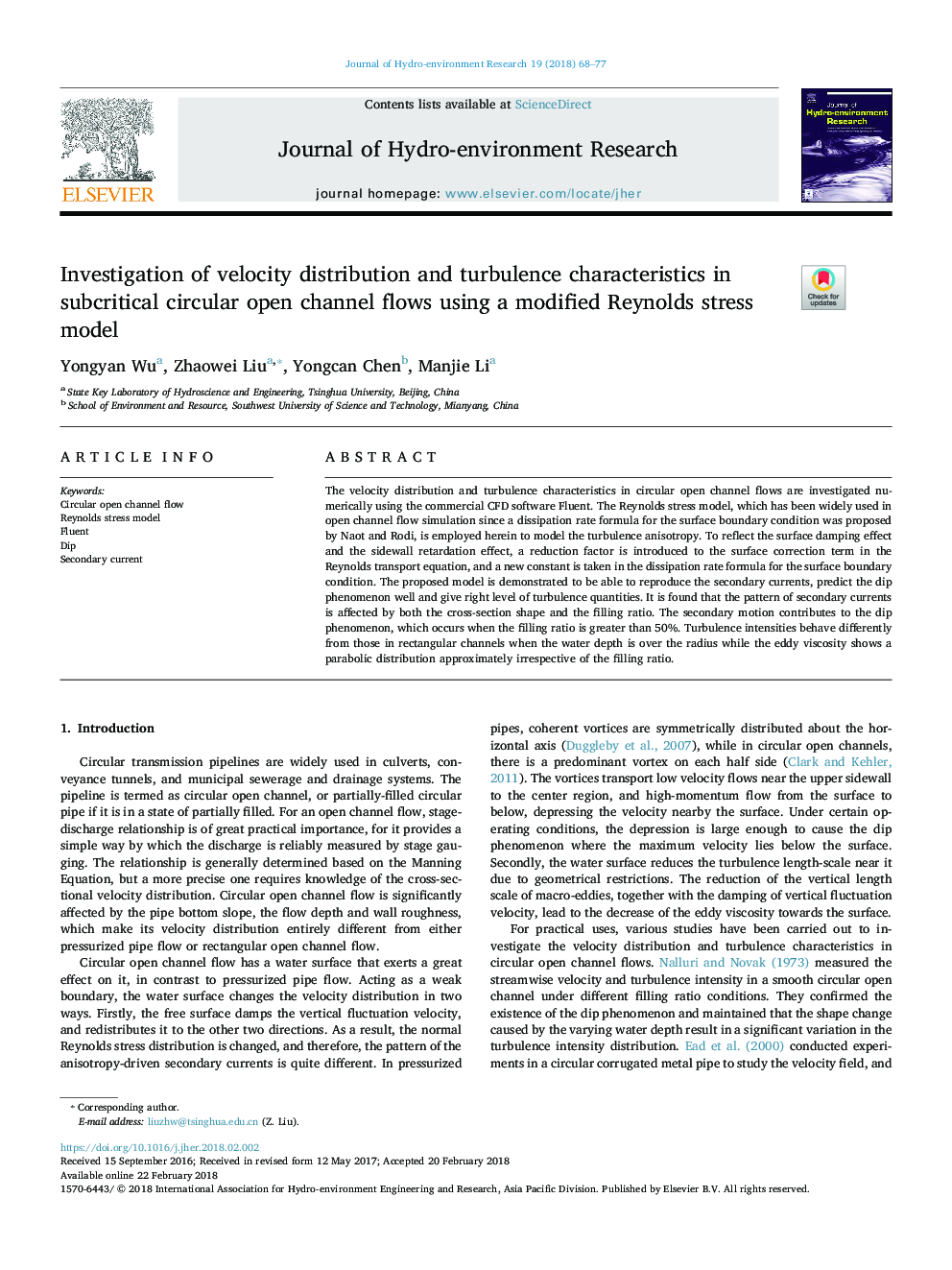| Article ID | Journal | Published Year | Pages | File Type |
|---|---|---|---|---|
| 8875458 | Journal of Hydro-environment Research | 2018 | 10 Pages |
Abstract
The velocity distribution and turbulence characteristics in circular open channel flows are investigated numerically using the commercial CFD software Fluent. The Reynolds stress model, which has been widely used in open channel flow simulation since a dissipation rate formula for the surface boundary condition was proposed by Naot and Rodi, is employed herein to model the turbulence anisotropy. To reflect the surface damping effect and the sidewall retardation effect, a reduction factor is introduced to the surface correction term in the Reynolds transport equation, and a new constant is taken in the dissipation rate formula for the surface boundary condition. The proposed model is demonstrated to be able to reproduce the secondary currents, predict the dip phenomenon well and give right level of turbulence quantities. It is found that the pattern of secondary currents is affected by both the cross-section shape and the filling ratio. The secondary motion contributes to the dip phenomenon, which occurs when the filling ratio is greater than 50%. Turbulence intensities behave differently from those in rectangular channels when the water depth is over the radius while the eddy viscosity shows a parabolic distribution approximately irrespective of the filling ratio.
Related Topics
Life Sciences
Agricultural and Biological Sciences
Agricultural and Biological Sciences (General)
Authors
Yongyan Wu, Zhaowei Liu, Yongcan Chen, Manjie Li,
